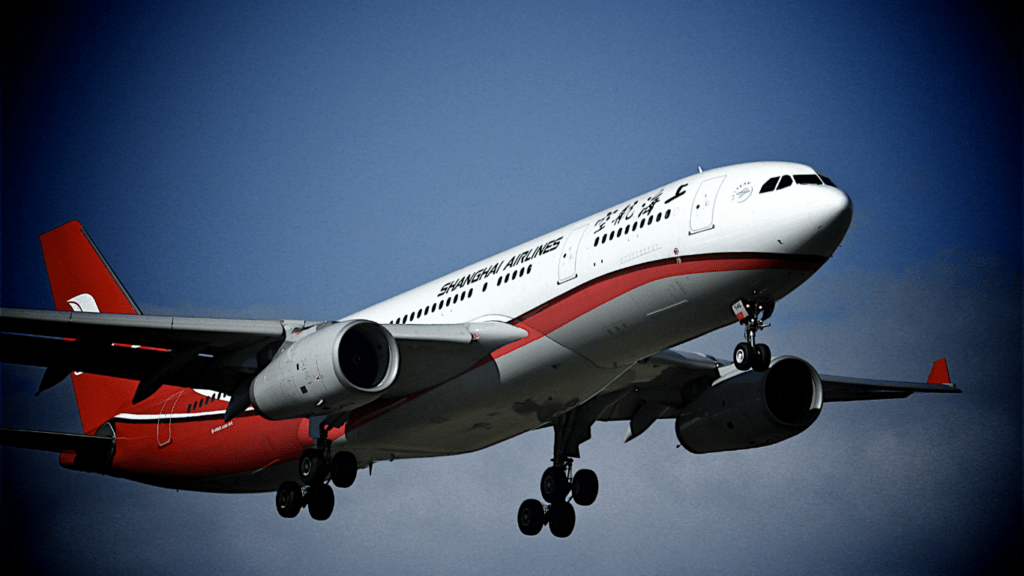Traveling abroad is an exciting adventure, but it can also put a strain on your wallet, especially when it comes to food. I’ve found that enjoying delicious meals while sticking to a budget is not only possible but can also enhance your travel experience.
With a little planning and creativity, you can savor local flavors without breaking the bank. In this article, I’ll share my top tips for eating well on a budget while exploring new destinations. From street food gems to grocery store finds, I’ll guide you through practical strategies that make dining out affordable and enjoyable.
You don’t have to sacrifice taste or quality—let’s dive into how you can indulge your palate without emptying your pockets.
Understanding Your Budget
Understanding your budget is crucial for traveling abroad without overspending on food. By setting clear financial parameters, I can enjoy local cuisine without breaking the bank.
Setting a Realistic Travel Budget
Setting a realistic travel budget includes considering all potential expenses. I account for transportation, accommodation, activities, and food. Analyzing average costs in my destination helps refine my budget.
For instance, researching meal prices allows me to gauge how much to allocate. Identifying local dining trends helps too; I note whether street food is popular or if sit-down restaurants dominate the area. Adjusting my budget based on local customs ensures I stay within my limits.
Allocating Funds for Food
Allocating funds for food involves determining daily spending limits. I plan to spend around 30-40% of my total budget on meals. Prioritizing meals allows for flexibility; I can splurge on nice dinners while saving on snacks.
Choosing to eat at local markets and street vendors helps stretch my dollars. I maintain a list of meals and snacks that fit my budget, ensuring my choices align with my financial goals. Tracking expenses daily keeps me accountable and aware of any necessary adjustments.
Researching Local Cuisine
I focus on exploring local cuisine to enjoy authentic dishes while staying within budget. Understanding the culinary landscape in the destination helps maximize the travel experience.
Identifying Affordable Local Dishes
I start by researching popular local dishes that are budget-friendly. Each destination often offers specialties that are both delicious and inexpensive. Street food, for instance, provides a fantastic way to taste local flavors without high costs. Markets and food stalls frequently showcase the best local offerings, all while keeping prices low. Examples include:
- Tacos in Mexico – Street vendors sell tasty tacos at reasonable prices.
- Pho in Vietnam – A hearty bowl of pho can be found for less than $2.
- Banh Mi in Vietnam – This flavorful sandwich is not only affordable, but also widely available.
I look for online resources, and local blogs, and often check social media platforms for recommendations. Engaging with locals gives invaluable insight into the best places to eat without overspending.
Learning Food Etiquettes
Understanding food etiquettes enhances the dining experience and shows respect for local customs. Each culture has unique dining norms that can impact meal enjoyment. I pay attention to practices such as:
- Dining Style – Some cultures prefer communal dining, while others favor individual plates.
- Tipping Practices – Knowing whether to tip and how much can be crucial. In many countries, tipping isn’t expected, while in others, it’s customary.
- Meal Timing – Local meal schedules may differ; I adapt to breakfast, lunch, and dinner times to enjoy meals at local hotspots.
Being mindful of these etiquettes fosters a deeper connection to the local culture while creating a memorable experience on a budget.
Shopping Smart
Shopping smart helps me maximize my food budget while traveling. By choosing local sources and finding discounts, I can enjoy delicious meals without overspending.
Choosing Local Markets
Choosing local markets provides access to fresh ingredients at lower prices. Markets often feature seasonal produce, which tends to be less expensive and more flavorful. Vendors frequently sell ready-to-eat meals as well, enabling me to try traditional dishes without high restaurant costs.
Engaging with locals in these markets often reveals hidden culinary gems and authentic flavors. Whenever possible, I explore farmers’ markets, street markets, and food stalls for budget-friendly options.
Finding Discounts and Deals
Finding discounts and deals can significantly stretch my travel food budget. I search for loyalty programs with grocery stores or restaurants that offer promotions. Apps that provide cashback or deals on meals also help me save money.
Using online platforms like Groupon or local dining guides often uncovers special offers. Additionally, eating during off-peak hours or taking advantage of ‘happy hour’ specials frequently leads to lower prices for meals. I also check for local discount cards or tourist passes that offer deals on dining to make the most of my budget.
Eating Out on a Budget
Finding budget-friendly dining options enhances any travel experience. I focus on strategies for selecting value restaurants and enjoying street food.
Tips for Choosing Value Restaurants
- Research Online: Check reviews and ratings on platforms like Yelp and TripAdvisor to identify popular spots with reasonable prices.
- Look for Locals: Seek out restaurants populated by locals, as they often serve authentic dishes at lower costs.
- Analyze Menus: Review menus for daily specials or lunch deals that provide substantial discounts without sacrificing quality.
- Choose Ethnic Cuisine: Explore ethnic restaurants, which frequently offer filling meals at reduced prices; examples include Indian buffets or Middle Eastern eateries.
- Prioritize Little Known Spots: Venture away from tourist traps; hidden gems often provide great food at lower prices.
Utilizing Street Food Vendors
- Discover Popular Stalls: Research local street food vendors that locals frequent, ensuring a taste of authentic cuisine.
- Track Food Trucks: Search for food trucks in urban areas; they offer diverse options at budget-friendly prices.
- Sample Smaller Portions: Opt for smaller servings or tapas to experience various dishes without overspending.
- Stay Updated on Hygiene: Assess food hygiene and cleanliness to ensure safe consumption from street vendors.
- Embrace Festivals: Attend local food festivals to access countless affordable street food options representing regional flavors.
Cooking for Yourself
Cooking for myself while traveling can significantly cut down food expenses and enhance my culinary experience. I often seek accommodations with kitchen access and utilize simple, travel-friendly recipes to enjoy healthy meals on a budget.
Accommodations with Kitchen Access
Choosing accommodations with kitchen access, such as hostels, apartments, or vacation rentals, allows me to prepare my meals. These options often include essential kitchen equipment like a stove, refrigerator, and utensils.
I’ve found that platforms like Airbnb, Vrbo, and Booking.com feature listings highlighting kitchen amenities. Cooking at home encourages me to buy local ingredients, minimizing my dining costs while immersing myself in the local culture.
Easy Travel-Friendly Recipes
Preparing meals on the road doesn’t need to be complex. I rely on easy recipes that require minimal ingredients and equipment. Here are some quick meal ideas:
- Pasta Salad: Combine cooked pasta, cherry tomatoes, cucumbers, olives, and a drizzle of olive oil.
- Stir-fried Rice: Use leftover rice, frozen veggies, and an egg for a filling dish.
- Wraps: Fill tortillas with hummus, sliced veggies, and cooked proteins for an easy meal.
- Overnight Oats: Mix rolled oats, yogurt, and fruit in a container for a no-cook breakfast.
Using these recipes, I can enjoy nutritious meals without straining my budget.
Packing Essentials
Packing smartly enhances the travel experience while keeping food expenses low. Essential items can make a significant difference when eating well on a budget.
Must-Have Cooking Tools
Bringing a few essential cooking tools simplifies meal preparation. Key items include:
- Portable utensils: A lightweight fork, knife, and spoon set allows easy meal consumption and preparation.
- Collapsible cookware: Lightweight pots or pans that collapse save space. Consider options made of non-stick material for quick clean-up.
- Reusable container: A sturdy container holds leftovers or ingredients, helping avoid food waste. Opt for ones that stack easily.
- Travel-size cutting board: A compact, flexible cutting board aids in food prep. Choose one that fits your travel bag without taking up too much space.
- Multi-tool gadget: A multi-functional tool can serve various purposes, such as cutting, peeling, and opening cans. Ensure it’s TSA-friendly for air travel.
Snacks to Bring Along
- Nuts and seeds: High in protein and healthy fats, nuts and seeds provide sustained energy. Choose a variety like almonds, peanuts, or pumpkin seeds.
- Granola bars: These portable options offer a convenient source of energy. Select bars with minimal added sugars for a healthier choice.
- Dried fruit: Lightweight and nutritious, dried fruits such as apricots or cranberries provide essential vitamins. They’re also a sweet treat without the bulk of fresh fruit.
- Crackers or rice cakes: Crunchy snacks are versatile and pair well with various toppings. Look for whole-grain options for added nutrients.
- Peanut butter packets: Individual packets are easy to carry and add flavor and protein to snacks. Pair them with crackers or fruit for a filling option.




